On July 19th, an international field team for implementing “Beidou Exploration”, one of the projects of the Global Engagement Program of Shanghai Jiao Tong University (SJTU) aimed at mapping and rescue with unmanned aerial vehicles (UAVs) in no man’s land in Northwest China, set off for the city of Dunhuang in Gansu Province and the town of Lenghu in the city of Mangya in Qinghai Province to conduct social services, field mapping, interviews and scientific research. Led by Deputy Dean of SJTU School of Aeronautics and Astronautics (SAA) Zhan Xingqun, the project recruited SAA associate research fellow Mu Zhongcheng, assistant professor Yang Rong, laboratory technician Zhang Xiaohui, SJTU International Affairs Division manager Dong Ting and Secretary of SJTU Youth League Committee Wang Jinglin as supervisors, as well as 32 Chinese and international students specializing in different fields of study from 10 SJTU schools including the SAA, the School of Physics and Astronomy, the School of Electronic Information and Electrical Engineering and the School of Agriculture and Biology. The team will spend 9 days working out operable and executable solutions and helping with their local implementation.

In mid-June, the team held several preparatory meetings and training sessions, where the supervisors introduced to the students the knowledge of UAV mapping and the principle and operations of the RTK positioning and tested the UAVs. The team was grouped into three sub-teams based on the expertise: the UAV mapping, RTK verification and social research sub-teams. The elaborate planning and preparation prior to the departure laid solid groundwork for the practice of the team.
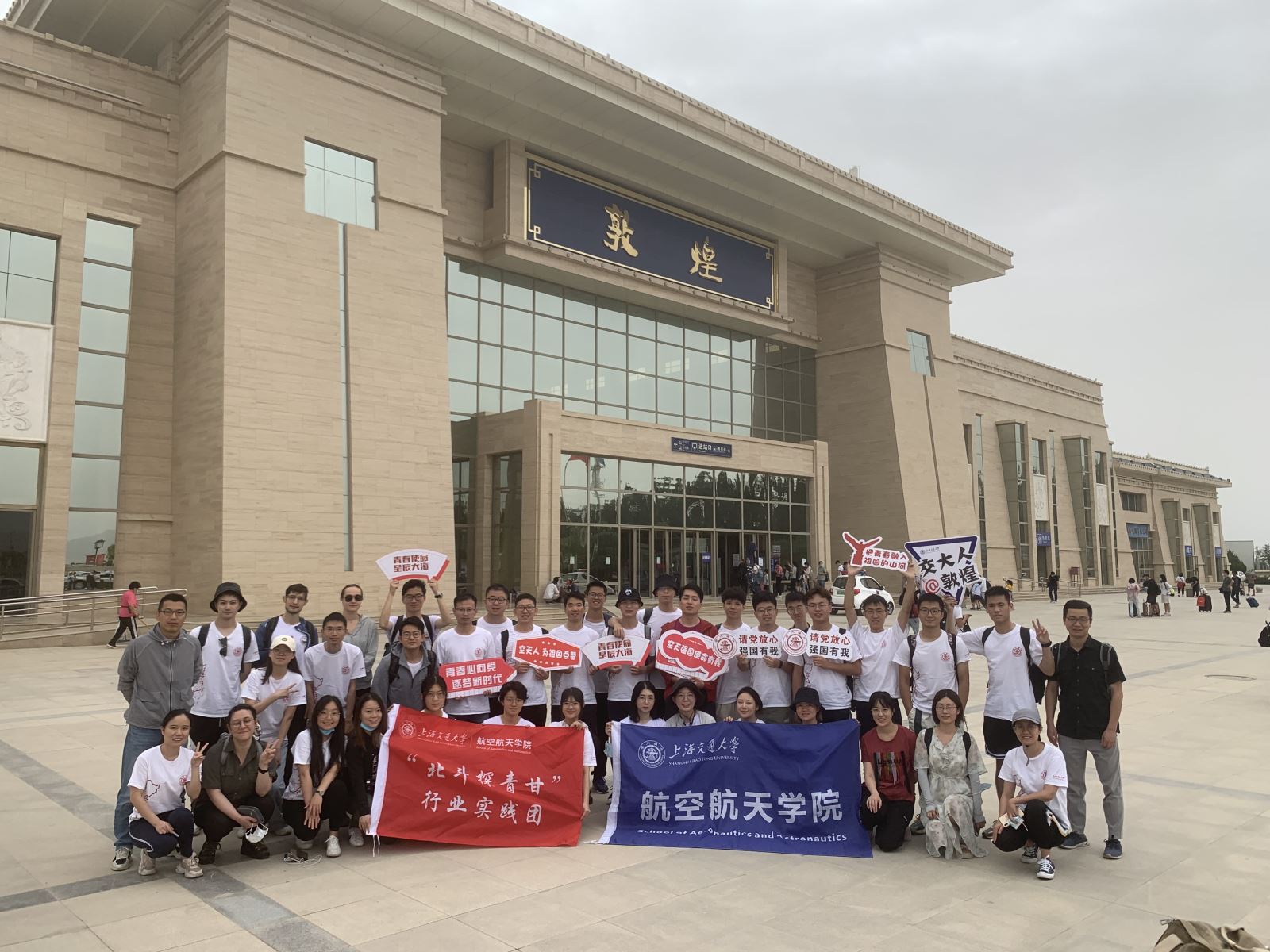
On the morning of July 20th, the team arrived at the Dunhuang Train Station, setting out on this journey of challenge.

On the afternoon of July 20th, the team arrived at the Dunhuang Dongjie Elementary School, where a kickoff ceremony was held. Head of instruction at the school Yu Donghong introduced the culture, history, accommodation and folk customs of Dunhuang, and expressed her heartfelt welcome to the arrival of the team.
Zhan Xingqun delivered a speech, where he introduced the project that he said was aimed at providing mapping solutions to no man’s land in Northwest China with the Beidou technology and encouraged the students to make all-out efforts in the practices to contribute to West China and the whole country. He also regarded the space power as one of the major strategic imperatives for China’s development and a main battlefield for employment and business in the future, and expected the students to uphold lofty ideals of aerospace studies, devote to the aerospace industry and align their individual values with the development of the country.
Yang Rong spoke on behalf of the supervisors, where she encouraged the students to maintain a sense of responsibility and mission as a member of SJTU and apply their respective expertise to the practices, and expected them to gain a deeper understanding of the reality in West China, promote science and technology and culture in the region and produce remarkable research outcomes.
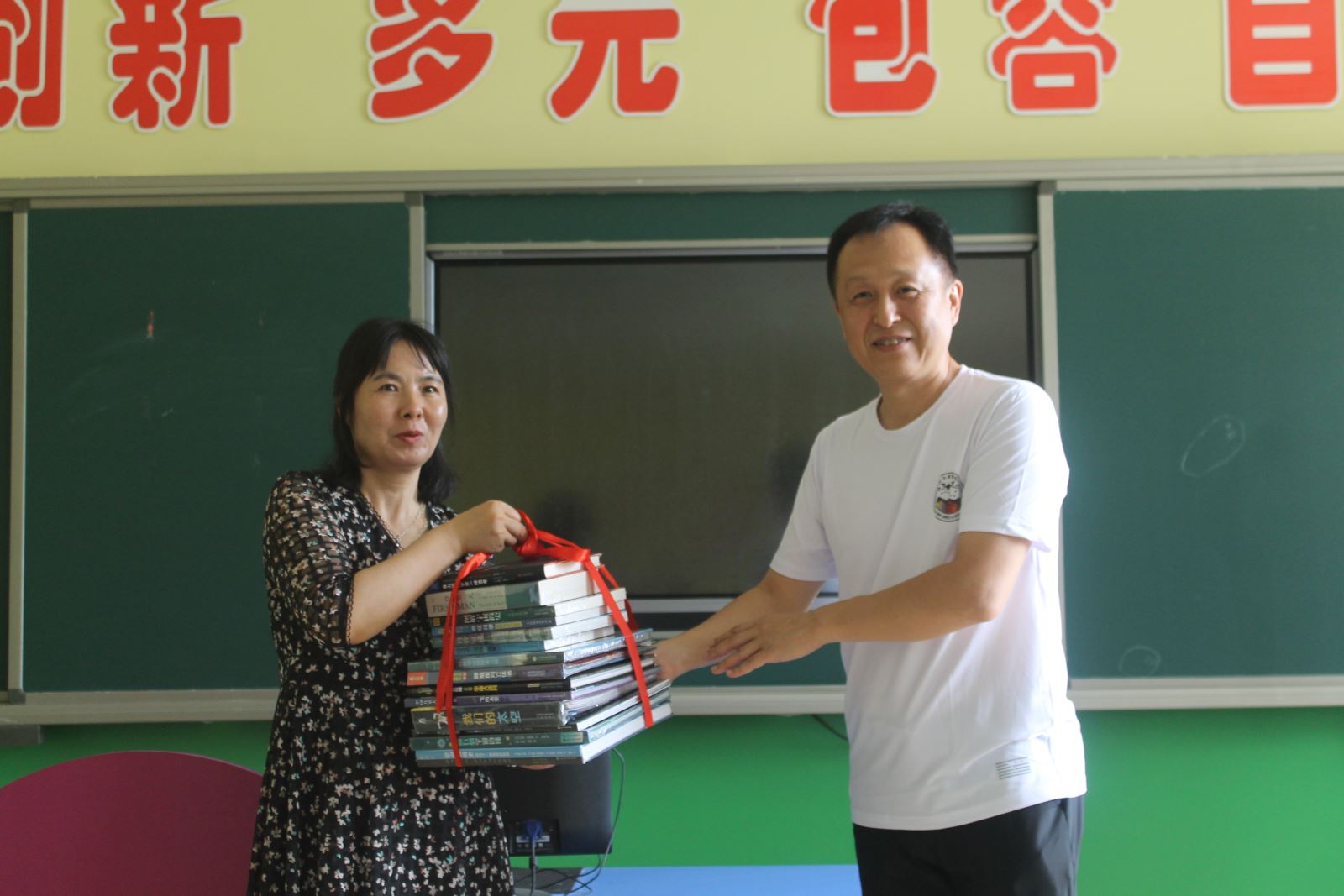
Zhan Xingqun is donating pop-science books to Yu Donghong on behalf of SJTU
Yangguan was named after its location to the south of Yumenguan. Built during the reign of Emperor Wu of the Han Dynasty, it was one of the two “gateways” to the western part of ancient China, as historical records show that four prefectures and two gateways were built along the Hexi Corridor in this period. In addition to a gateway to West China, Yangguan was also a key post to the southern road of the “Silk Road” and a strategic place of constant military rivalry for generations in ancient China. The ruins of the Great Wall of the Han Dynasty is located in Yangguan and has a very important value to historical studies. The team performed UAV mapping and 3D modelling to the ruins, which would be instrumental to its protection.
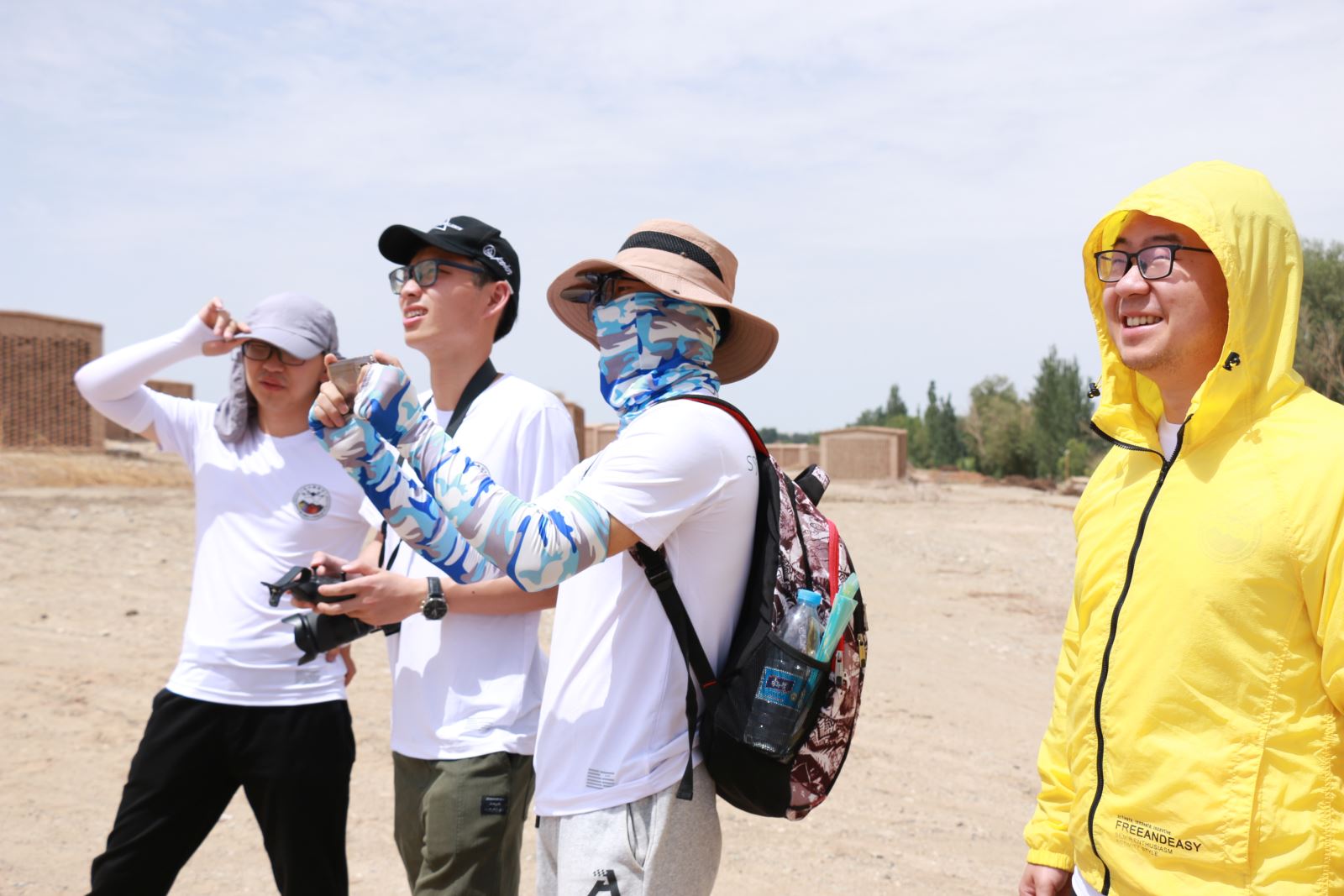
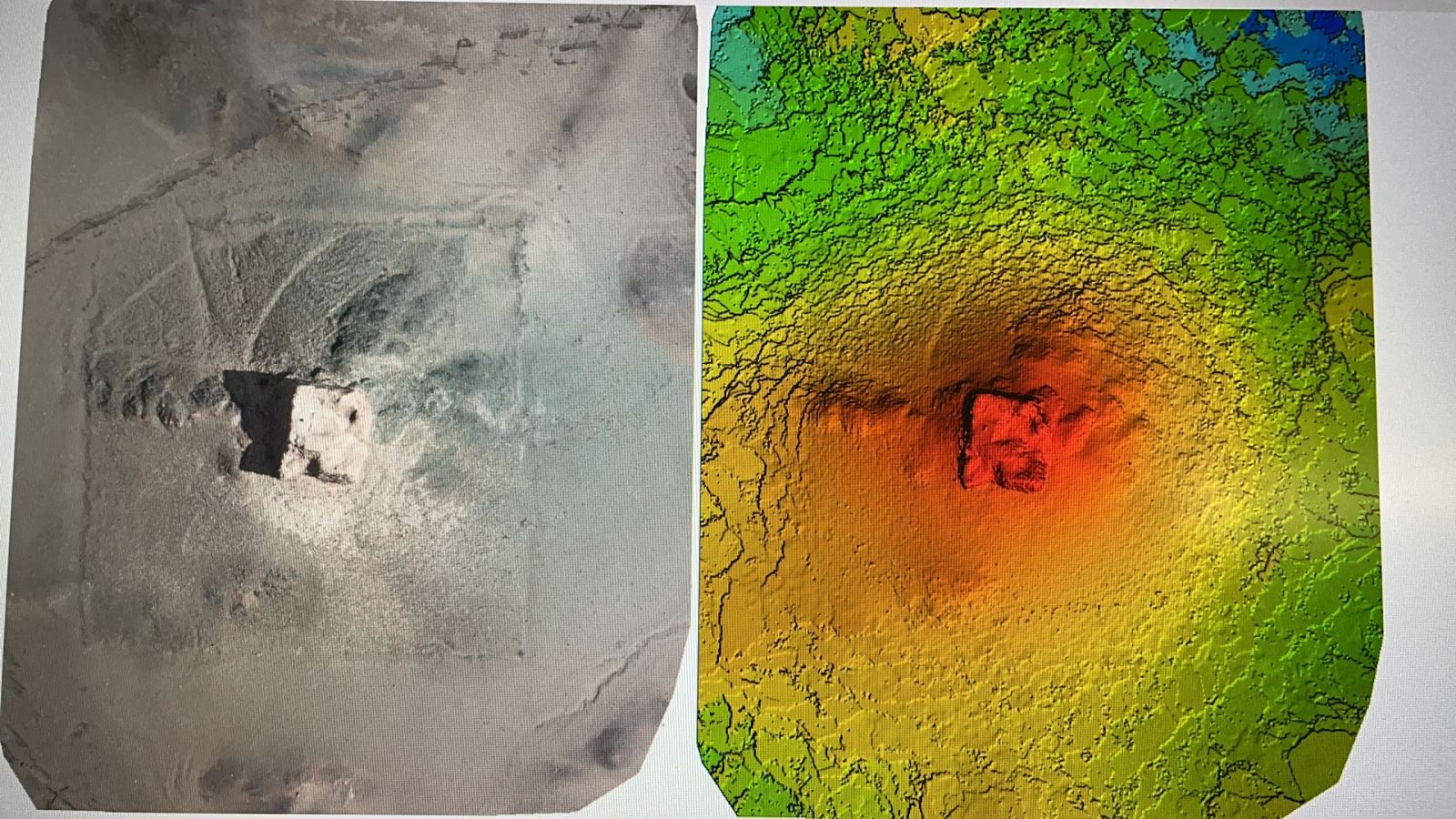
On July 21st, the team arrived in Yangguan, where the UAV mapping was conducted in some targeted areas. Prior to the mapping, the team performed a short flight test and data preprocessing, and corrected the flight based on modelled 3D images.
Zhang Xiaohui and the students tasked with scientific education taught the elementary school students how to make and piece together model airplanes and the principles thereof, and flied the airplanes in the Gobi Desert.
Mu Zhongcheng gave the elementary school students a brief introduction to the Beidou satellite and its navigation that could be applied to multiple fields in China and would be key to the country’s efforts to build a safe network. He also encouraged them to work hard and contribute to a brighter future for the country.
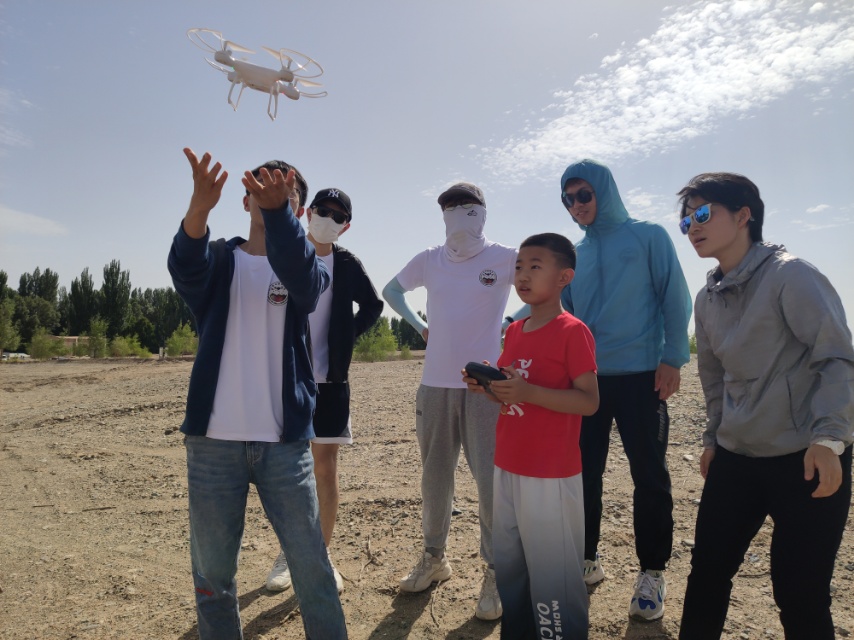
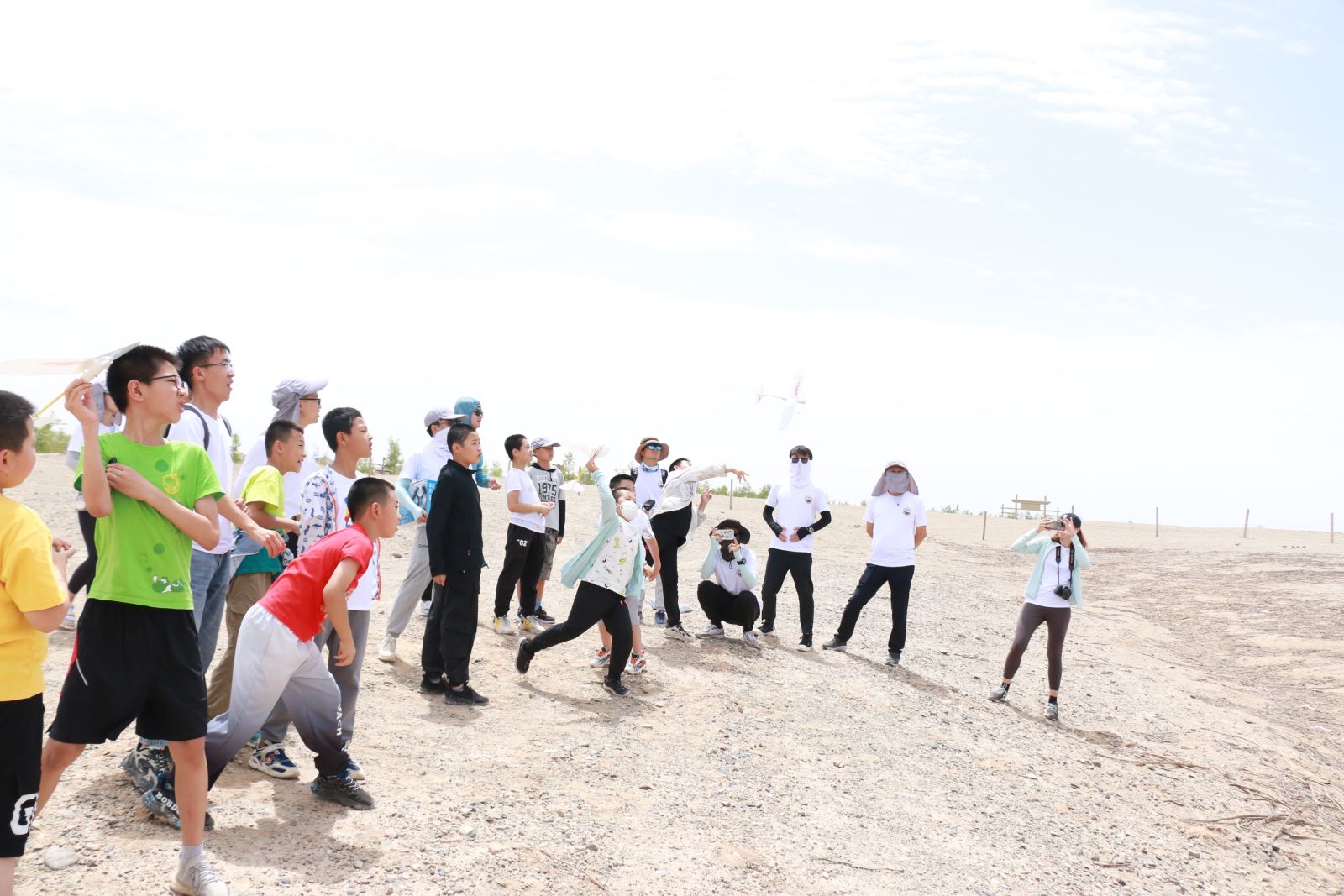
The practices of the first two days of the journey provided the students of the team with not only an opportunity to see for themselves the magnificent natural landscape of West China and its rich culture, but a deeper understanding of the relations between aerospace and historical protection. They will be more enthusiastic about the remaining tasks to be fulfilled in Lenghu in the next few days, where they will continue to contribute their wisdom to West China.


